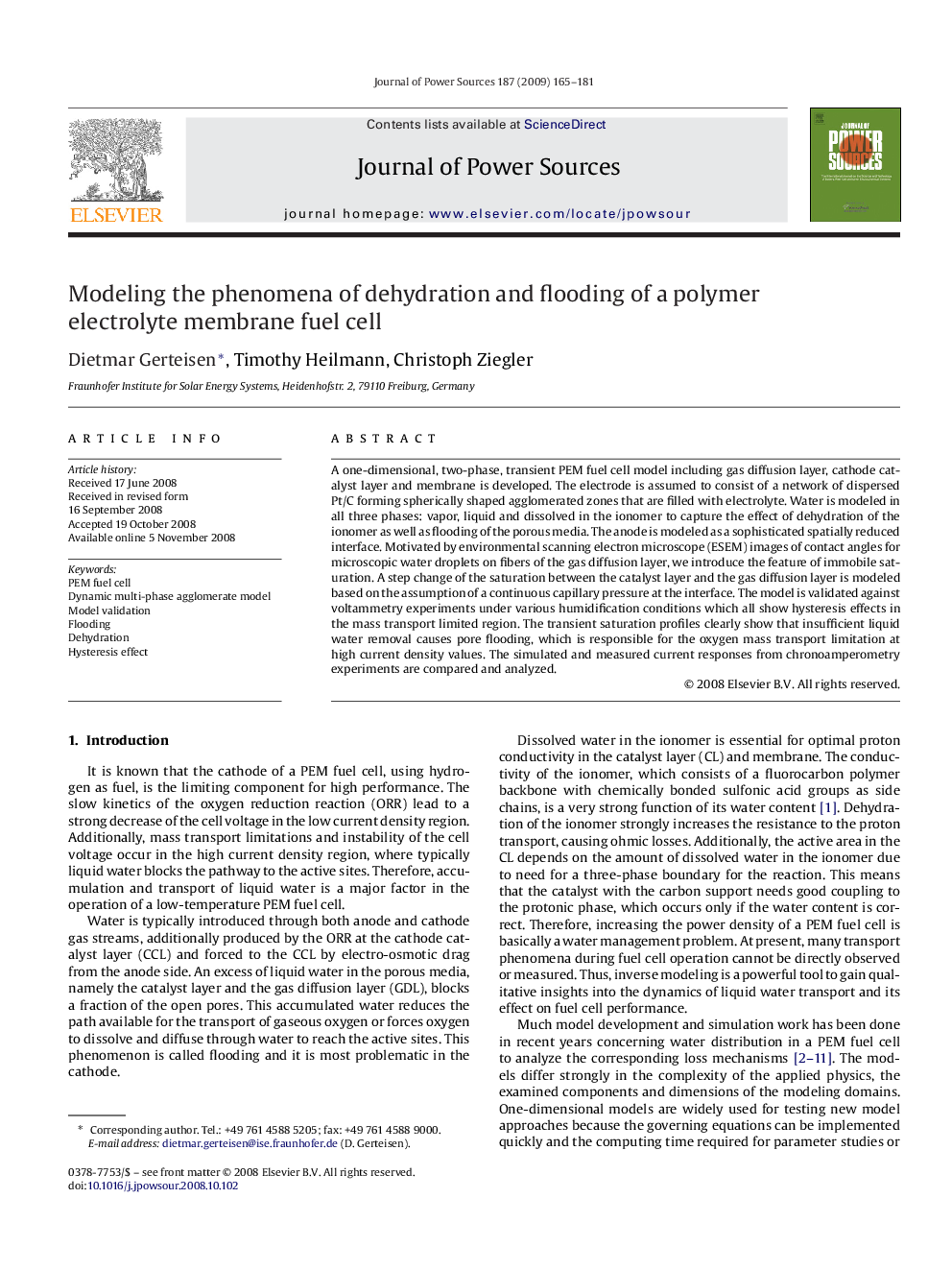| Article ID | Journal | Published Year | Pages | File Type |
|---|---|---|---|---|
| 1285335 | Journal of Power Sources | 2009 | 17 Pages |
A one-dimensional, two-phase, transient PEM fuel cell model including gas diffusion layer, cathode catalyst layer and membrane is developed. The electrode is assumed to consist of a network of dispersed Pt/C forming spherically shaped agglomerated zones that are filled with electrolyte. Water is modeled in all three phases: vapor, liquid and dissolved in the ionomer to capture the effect of dehydration of the ionomer as well as flooding of the porous media. The anode is modeled as a sophisticated spatially reduced interface. Motivated by environmental scanning electron microscope (ESEM) images of contact angles for microscopic water droplets on fibers of the gas diffusion layer, we introduce the feature of immobile saturation. A step change of the saturation between the catalyst layer and the gas diffusion layer is modeled based on the assumption of a continuous capillary pressure at the interface. The model is validated against voltammetry experiments under various humidification conditions which all show hysteresis effects in the mass transport limited region. The transient saturation profiles clearly show that insufficient liquid water removal causes pore flooding, which is responsible for the oxygen mass transport limitation at high current density values. The simulated and measured current responses from chronoamperometry experiments are compared and analyzed.
